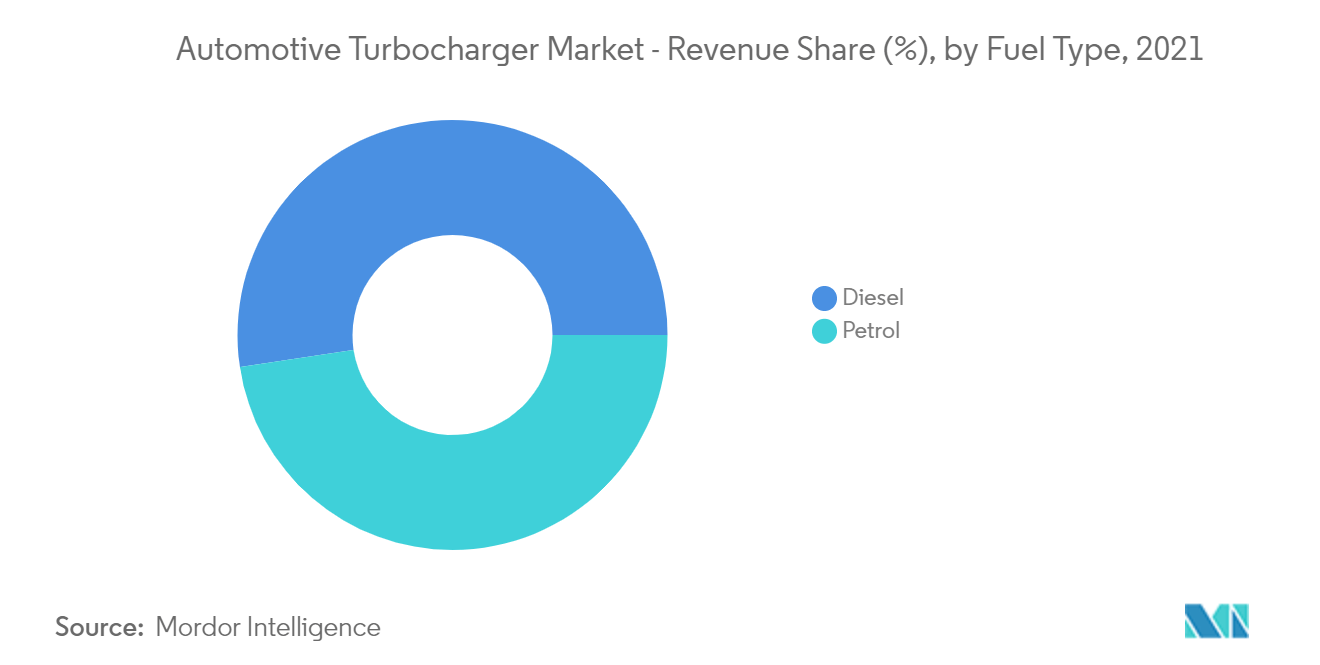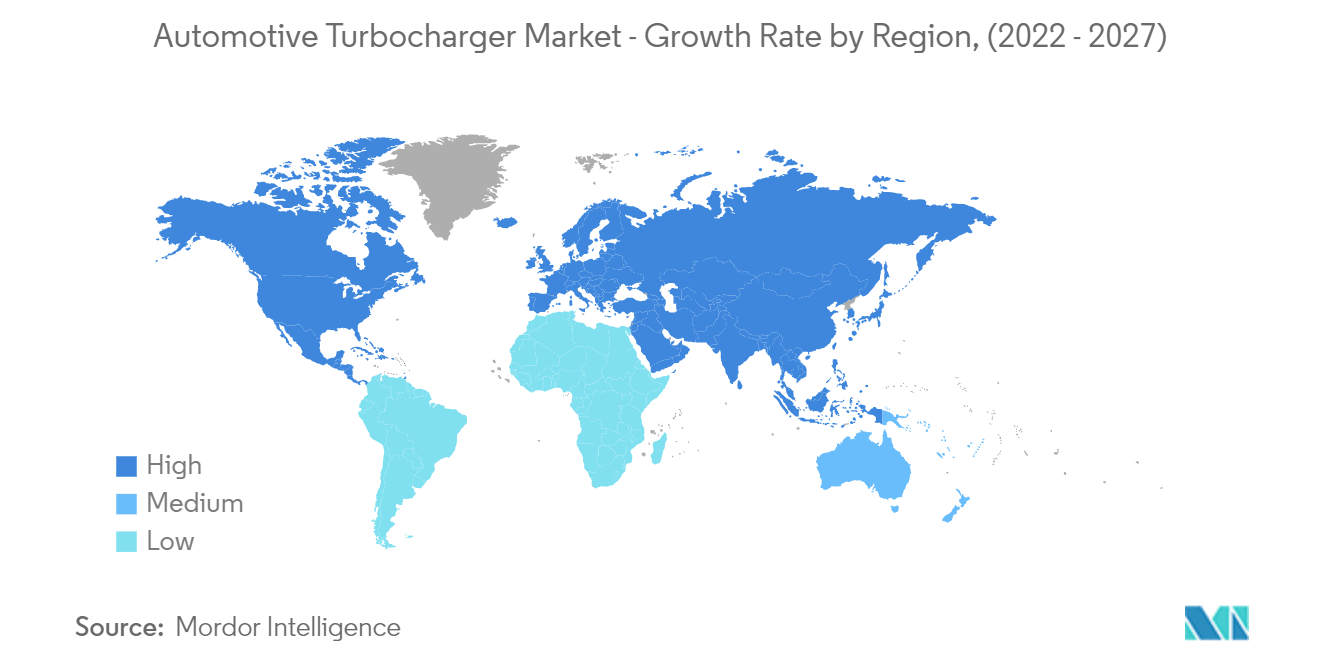Market Trends of Automotive Turbocharger Industry
This section covers the major market trends shaping the Automotive Turbocharger Market according to our research experts:
Increased Adoption of Petrol Engines Likely to Grow During Forecast Period
Diesel engines have emerged as the dominant fuel type for car companies, as diesel engine emits low CO2 and offers great performance. However, on the other hand, the diesel proportion of new registrations has been falling gradually for some time, as modern petrol-powered cars are popular and have become better at delivering similar benefits, and this trend is expected to pick up the pace during the forecast period.
A few more reasons had propelled the market for gasoline-type engines, for instance, the Volkswagen diesel emissions scandal in 2015, when Volkswagen supplied around 11 million defective diesel engine cars globally, including eight million in Europe. The diesel car sales are witnessing a declining trend in the region, and the Volkswagen emission scandal resulting in a call back of all faulty vehicles has further resulted in the decline in sales of the company's vehicles. The revelations resulted in a sharp fall in demand for diesel engine cars, which aided in the rise in the demand for gasoline engine cars.
In the United Kingdom, car buyers prefer downsized petrol engines emitting nearly 100g/km CO2 as a feasible, efficient alternative to diesel engines. Currently, global players, such as Ford, Opel/Vauxhall, Volkswagen, and Hyundai, offer similarly downsized petrol engines, many emitting around 100g/km of CO2.
Recent developments in turbo petrol engines have engaged several players under strategic alliance for elevating the market potential. For instance, Toyota corporation announced its expansion in 2.0-litre turbo-petrol engine and AWD with Glanza-based GR Starley. The company made this maiden expansion for its 2.0-liter 3S-GTE turbocharged petrol engine.
Petrol-powered engines are moving from naturally aspirated engines to turbocharged engines at a faster rate than ever before. It has been estimated that over the forecast period, 50% of the cars sold may have turbochargers, and similar growth is expected to continue.
The tendency to use turbochargers for diesel engines for improved fuel efficiency and engine performance is slowly changing. The market revenue from diesel turbochargers is slowly shifting toward petrol superchargers, and this shift has been beneficial for the market, considering the emission norms.

Europe Likely to Account for the Largest Market Share During the Forecast Period
The modern car industry is governed by fuel economy and efficiency, which, in turn, is driven by the EU legislation on fuel economy and emissions targets. The Kyoto Protocol required the world to pull its 1990-level emissions back to 8% by 2012, which led to the start of the Euro I vehicle emissions standards of 1993. It covered mostly nitrous oxide and particulate emissions, which increased diesel-engine vehicle sales. However, diesel-engine vehicles shifted to turbocharging to reach EU targets on NOx. This, in turn, resulted in improving the efficiency of the vehicles and reducing the price of turbochargers.
Europe has become the epicenter of COVID-19 impact, with approximately 50,000 units of lost production in March and April due to stringent plant closures, workplace controls across the region, supply chain challenges, and stay-at-home orders.
Compared to the previous year, the European region's production of commercial vehicles declined by approximately 20% by the end of 2020. The sharpest decline in demand is anticipated to be faced by Italy and the United Kingdom in Western Europe and countries, including Poland, in Central Europe, where the trucking industry prominently supports the European goods movement. For instance,
- In March 2022, Mercedes-Benz announced the launch of sales of its new Mercedes-AMG C 43 4MATIC with a price starting at EUR 71,460 for the Saloon and EUR 73,245 for the Estate. In this completely redeveloped model performance of the agile, 300 kW (408 hp) AMG engine is enhanced by an electric exhaust gas turbocharger. The belt-driven starter generator (RSG) offers an additional short-term boost of 10 kW (14 hp) in certain driving situations.
- In April 2022, Daimler Trucks announced that the third generation of its OM 471 heavy-duty engine is now available to order and available from October 2022. With the third generation of the OM 471, Mercedes-Benz Trucks is introducing two new turbochargers developed and manufactured in-house. The second turbocharger variant has an engine rating of up to 390 kW (530 hp).
Such aforementioned developments are anticipated to positively impact the market during the forecast period.


